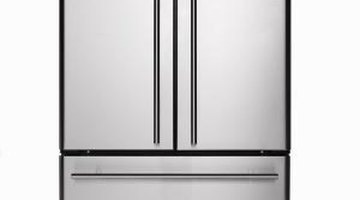How to Troubleshoot a Refrigerator That Died
Refrigerators are among the most reliable appliances you have in your home. For years, a refrigerator will run with minimal maintenance -- it constantly runs in cycles to keep your food fresh. A dead refrigerator may mean many things, from a power outage to a bad compressor. Proper troubleshooting of the unit will prevent unnecessary and expensive repairs, or lead you to the conclusion that it is time to replace your refrigerator.

Step 1
Check the power plug for the unit. Ensure that the outlet is a good and that it can handle the voltage of the refrigerator.
Step 2
Inspect the circuit breaker of the home and check for flipped switches.
Step 3
Unplug the unit for 24 hours then plug it back in. If the unit turns on, the compressor is shorting out once the unit warms up.
Step 4
Pull the unit out from the wall to expose the back of the unit. Kneel down to access the compressor and the overload protector. The overload protector is a small metal box that has wires going inside.
Step 5
Pull off the cover of the overload protector and inspect the wire connections for corrosion. Pull up on the spring clip holding the overload protector in place and pull it out.
Step 6
Set a multimeter -- a device used to test voltage -- to the X1 setting. Touch the multimeter to each probe of the terminal. You should receive a reading of zero ohms. Replace the unit if you receive anything other than that reading.
References
Photo Credits
- Ryan McVay/Photodisc/Getty Images
More Articles



